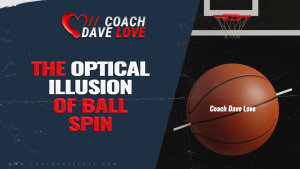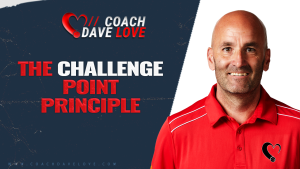Basketball shooting development can be compared to both poker and blackjack, where foundational principles and strategies help shift the odds slightly in favor of the player. Just as poker players need to understand when to check, raise, or fold—and blackjack players need to know when to hit, stand, double down, or split—coaches working with players on shooting development need to grasp skill acquisition principles. These principles, such as variability in practice, feedback mechanisms, and the ecological approach, serve as the foundational guidelines for improvement, much like basic strategy in poker or blackjack.
For a novice poker or blackjack player, not understanding these foundational strategies is a recipe for failure. They may place bets without a purpose, fail to calculate odds, and make decisions that have little basis in probability. Similarly, a coach who teaches shooting purely through drills and habits, without understanding the underlying skill acquisition concepts, is essentially playing the game with the odds stacked against them. The player might work hard but will lack the strategic direction needed for meaningful improvement.
The Professional Advantage: Playing the Odds Like a Pro
In basketball, the equivalent to this professional edge is a coach who deeply understands skill acquisition principles. These coaches don’t just run players through drills for the sake of repetition; they use concepts like variability, feedback, and task specificity to create a more thoughtful, strategic approach to player development. This strategic framework shifts the odds slightly in the player’s favor, just as a professional gambler’s knowledge of the game increases their probability of winning. With these principles, coaches are not just improving shooting; they’re creating a structure that optimizes long-term growth.
For a novice poker or blackjack player, not understanding these foundational strategies is a recipe for failure. They may place bets without a purpose, fail to calculate odds, and make decisions that have little basis in probability. Similarly, a coach who teaches shooting purely through drills and habits, without understanding the underlying skill acquisition concepts, is essentially playing the game with the odds stacked against them. The player might work hard but will lack the strategic direction needed for meaningful improvement.
ShotMetrics: The Card Counting Equivalent for Basketball
But what if there were a way to go even further—to tilt the odds so dramatically in the coach and player’s favor that the game changes entirely? This is where ShotMetrics comes into play. ShotMetrics is like counting cards in blackjack—a strategy so effective that casinos have banned it because it gives the player such a significant advantage. Card counting allows a blackjack player to track the ratio of high to low cards left in the deck, giving them a precise understanding of when the odds are in their favor. This knowledge enables the player to make highly informed decisions, tipping the balance of the game far beyond what basic strategy can offer.
In basketball shooting development, ShotMetrics offers the same kind of advantage. While skill acquisition principles provide a solid foundation—much like basic strategy in poker or blackjack—ShotMetrics brings in empirical data, giving coaches insights into a player’s shooting motion that go far beyond traditional methods. ShotMetrics measures various aspects of a player’s mechanics, providing data-driven feedback that allows for precise adjustments. This kind of information tilts the odds heavily in favor of the player, just like card counting in blackjack dramatically improves a gambler’s chances of winning. When coaches combine the foundational principles of skill acquisition with the powerful insights of ShotMetrics, the advantage becomes undeniable.
The Art of Basketball and Poker: Beyond the Numbers
However, it’s important to recognize that shooting development, like gambling, isn’t solely about numbers. In poker, even a player who knows all the odds must still account for the human element—reading opponents, sensing when someone might be bluffing, and adjusting strategy based on intuition and feel. In blackjack, even card counters must know when to adjust their bets based on the flow of the game and other situational factors. The best players in both poker and blackjack understand the balance between strategy and instinct.
In basketball, the same is true. Shooting isn’t purely a matter of mechanical repetition or data analysis—it’s also an art. Players need to adapt to defenders, game situations, and personal rhythm, making split-second decisions that go beyond what can be planned or predicted. Great shooters don’t just follow a rigid set of rules; they adjust in real time, much like a skilled poker player reads the room or a blackjack player alters their bets based on the deck count.
Mastering the Game: Combining Art and Science in Coaching
However, it’s important to recognize that shooting development, like gambling, isn’t solely about numbers. In poker, even a player who knows all the odds must still account for the human element—reading opponents, sensing when someone might be bluffing, and adjusting strategy based on intuition and feel. In blackjack, even card counters must know when to adjust their bets based on the flow of the game and other situational factors. The best players in both poker and blackjack understand the balance between strategy and instinct.
In basketball, the same is true. Shooting isn’t purely a matter of mechanical repetition or data analysis—it’s also an art. Players need to adapt to defenders, game situations, and personal rhythm, making split-second decisions that go beyond what can be planned or predicted. Great shooters don’t just follow a rigid set of rules; they adjust in real time, much like a skilled poker player reads the room or a blackjack player alters their bets based on the deck count.
Conclusion: From Marginal Gains to a Game-Changing Advantage
Whether in poker, blackjack, or basketball, success depends on both knowledge and execution. A novice player—or coach—who doesn’t understand the rules or odds is leaving too much to chance. However, professional poker and blackjack players who understand the foundational principles tilt the odds in their favor, just as coaches who understand skill acquisition improve their players’ chances of developing into better shooters.
But when you introduce ShotMetrics, it’s like giving the coach the ability to count cards—an undeniable advantage that shifts the game entirely in their favor. While the foundational principles of skill acquisition tilt the odds slightly, ShotMetrics tips the scales dramatically. And just like in poker or blackjack, where the best players blend strategy with instinct, the best coaches combine the science of ShotMetrics with the art of coaching to create lasting success for their players.
By mastering both the foundational principles and advanced insights, coaches can guide their players to success in a way that goes beyond traditional methods, turning basketball shooting development into a calculated, strategic process rather than a game of chance.



